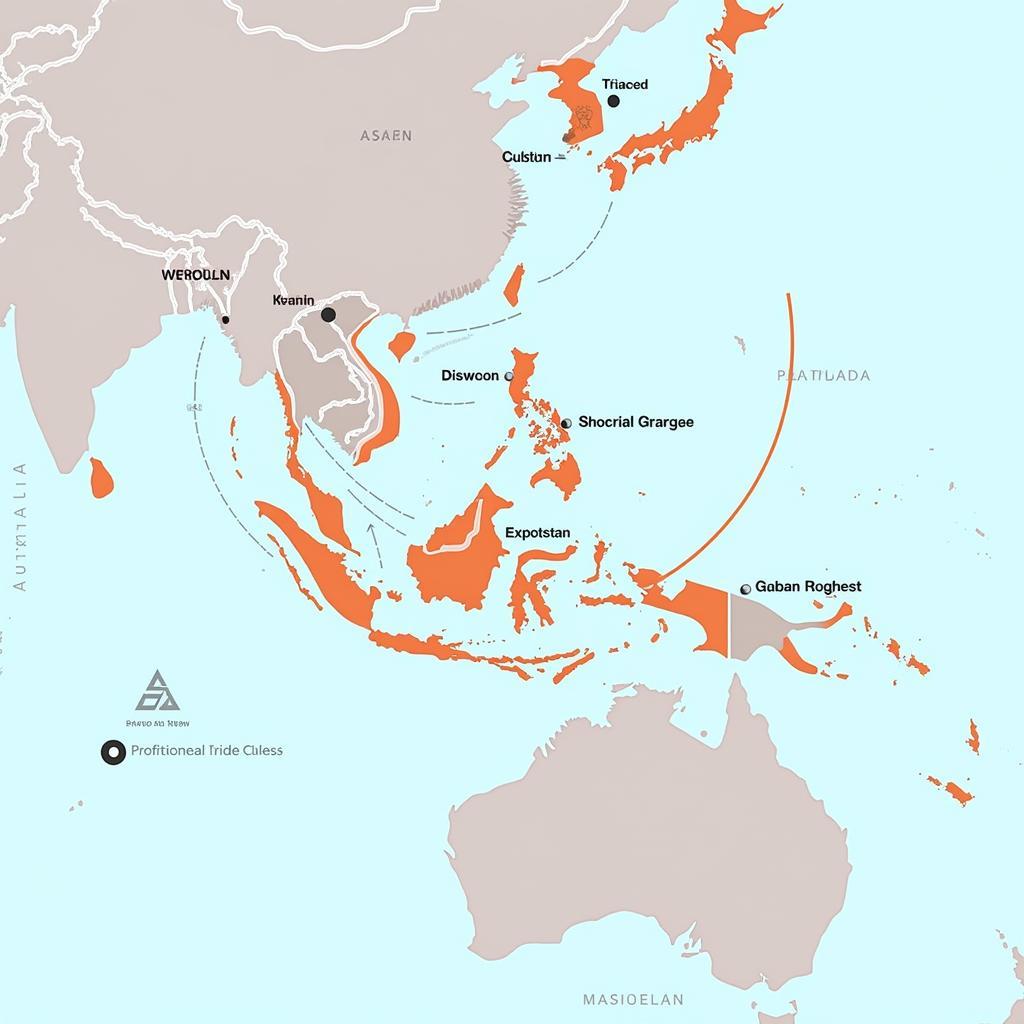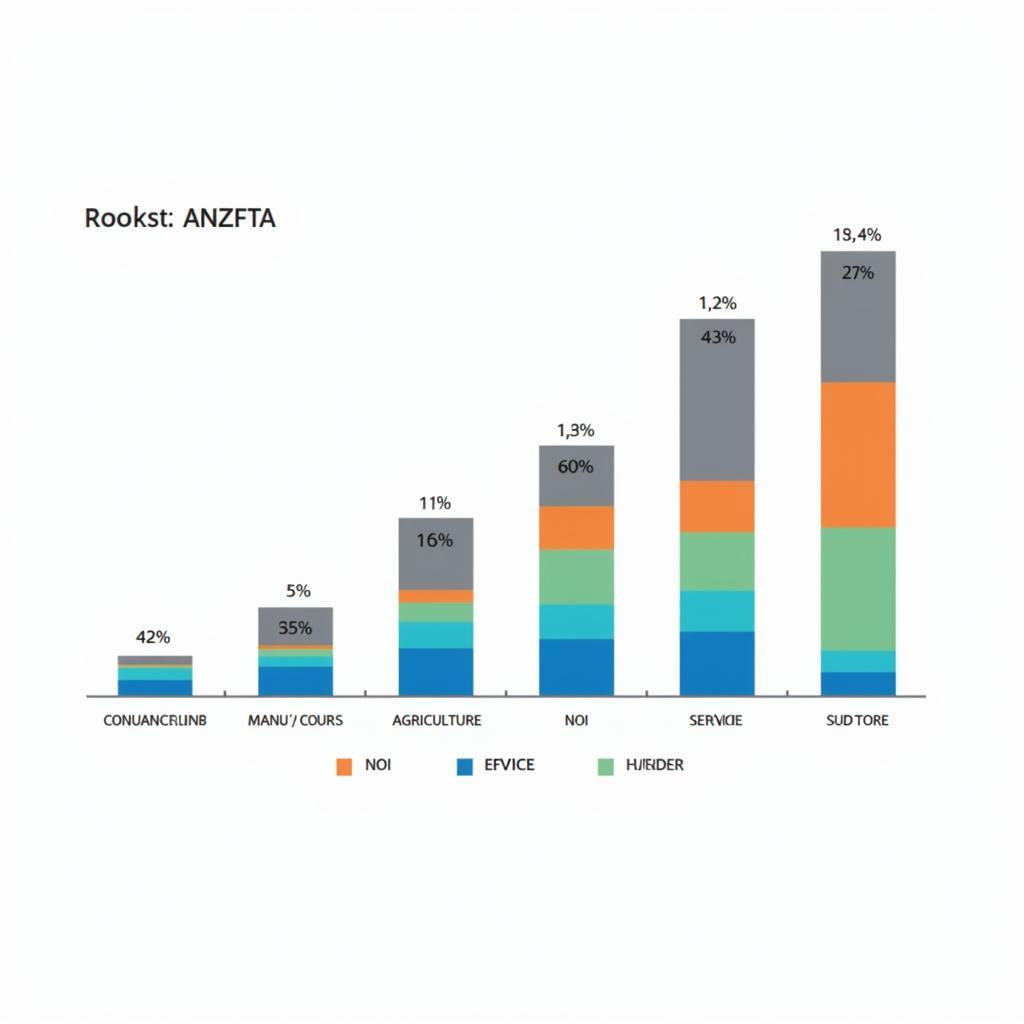The ASEAN Australia New Zealand Free Trade Agreement (AANZFTA), often referred to as the Asean Australia New Zealand Fta Text, is a comprehensive agreement designed to foster stronger economic ties and promote freer trade among the participating nations. This landmark agreement has significant implications for businesses and consumers alike, creating opportunities for growth and enhanced market access across a diverse range of sectors. It’s crucial to understand the key aspects of this agreement to fully grasp its impact on the regional and global landscape.
Understanding the ASEAN Australia New Zealand FTA
The AANZFTA goes beyond simply reducing tariffs. It addresses a broad spectrum of trade-related issues, including services, investment, intellectual property rights, and competition policy. By streamlining regulations and harmonizing standards, the agreement aims to create a more predictable and transparent trading environment. This framework fosters greater confidence for businesses looking to expand their operations within the region. This agreement is a significant step towards greater economic integration in the Asia-Pacific region. For businesses operating in the area, understanding the nuances of the ASEAN Australia FTA is essential.
 AANZFTA Trade Flows Between Member Countries
AANZFTA Trade Flows Between Member Countries
One of the key benefits of AANZFTA is its facilitation of the movement of skilled labor within the member countries. This provision allows for easier transfer of personnel for specific projects and assignments, supporting the growth of businesses and the exchange of expertise across borders. The AANZFTA has opened doors for businesses in both Australia and New Zealand to access the vibrant and growing Southeast Asian market. You can explore more on ASEAN Australia cooperation to deepen your understanding of this dynamic partnership.
Key Provisions of the ASEAN Australia New Zealand FTA Text
The AANZFTA text encompasses numerous detailed provisions covering various aspects of trade and investment. These include:
- Tariff Reductions: The agreement has progressively eliminated tariffs on a substantial portion of goods traded between the member states. This leads to lower prices for consumers and increased competitiveness for businesses.
- Services Liberalization: AANZFTA provides greater access to service markets across the member countries, fostering competition and innovation in sectors like finance, telecommunications, and tourism.
- Investment Protection: The agreement establishes a framework for protecting foreign investments, providing greater certainty for investors and encouraging cross-border investment flows.
 AANZFTA Impact on Key Industries
AANZFTA Impact on Key Industries
- Intellectual Property Rights: AANZFTA strengthens intellectual property protection, fostering innovation and creativity by providing a secure environment for businesses to develop and commercialize their intellectual assets.
- Dispute Settlement Mechanism: A clear and transparent dispute settlement mechanism is established within the agreement to resolve trade-related disputes amicably and efficiently.
“The AANZFTA has been instrumental in promoting economic growth and integration in the region. Its comprehensive provisions address a wide range of trade-related issues, creating a more conducive environment for businesses to thrive,” notes Dr. Maria Reyes, a leading economist specializing in Southeast Asian trade.
Benefits and Challenges of the AANZFTA
The AANZFTA has yielded numerous benefits for the participating nations, including increased trade flows, enhanced investment opportunities, and greater economic integration. However, challenges remain, including ensuring equitable distribution of benefits and addressing non-tariff barriers that continue to hinder trade in certain sectors. Understanding the advantages of ASEAN economic integration offers valuable insights into the broader regional context.
What countries are involved in the AANZFTA? You can find the answer by looking at the ASEAN Australia New Zealand Free Trade Agreement Countries.
Conclusion
The ASEAN Australia New Zealand FTA text represents a significant milestone in regional economic cooperation. By reducing trade barriers and fostering greater integration, the agreement has created numerous opportunities for businesses and consumers. As the agreement continues to evolve, addressing the remaining challenges will be crucial to maximizing its potential for sustainable and inclusive economic growth. For more information on specific aspects of the agreement, refer to the AANZFTA ASEAN org specimen signatures.
FAQ
- What is the main objective of the AANZFTA? To promote freer trade and enhance economic cooperation among ASEAN countries, Australia, and New Zealand.
- How does the AANZFTA impact tariffs? It progressively eliminates tariffs on a wide range of goods traded between member states.
- Does the AANZFTA cover services trade? Yes, it includes provisions for liberalizing services trade across various sectors.
- What are some of the challenges faced by the AANZFTA? Ensuring equitable distribution of benefits and addressing non-tariff barriers.
- Where can I find more detailed information on the AANZFTA text? Official government websites and resources provide comprehensive information.
- What is the significance of the AANZFTA for small and medium-sized enterprises (SMEs)? The AANZFTA offers SMEs increased market access and opportunities for growth.
- How does the AANZFTA contribute to regional economic integration? By streamlining regulations and fostering greater trade and investment flows.
Further Questions to Consider
- How has the AANZFTA impacted specific industries within the member countries?
- What are the long-term implications of the AANZFTA for regional economic growth?
- How can businesses leverage the AANZFTA to expand their operations in the region?
For support, contact Phone: 0369020373, Email: [email protected] or visit us at Ngoc Lien Village, Hiep Hoa, Bac Giang, Vietnam. We have a 24/7 customer service team.
